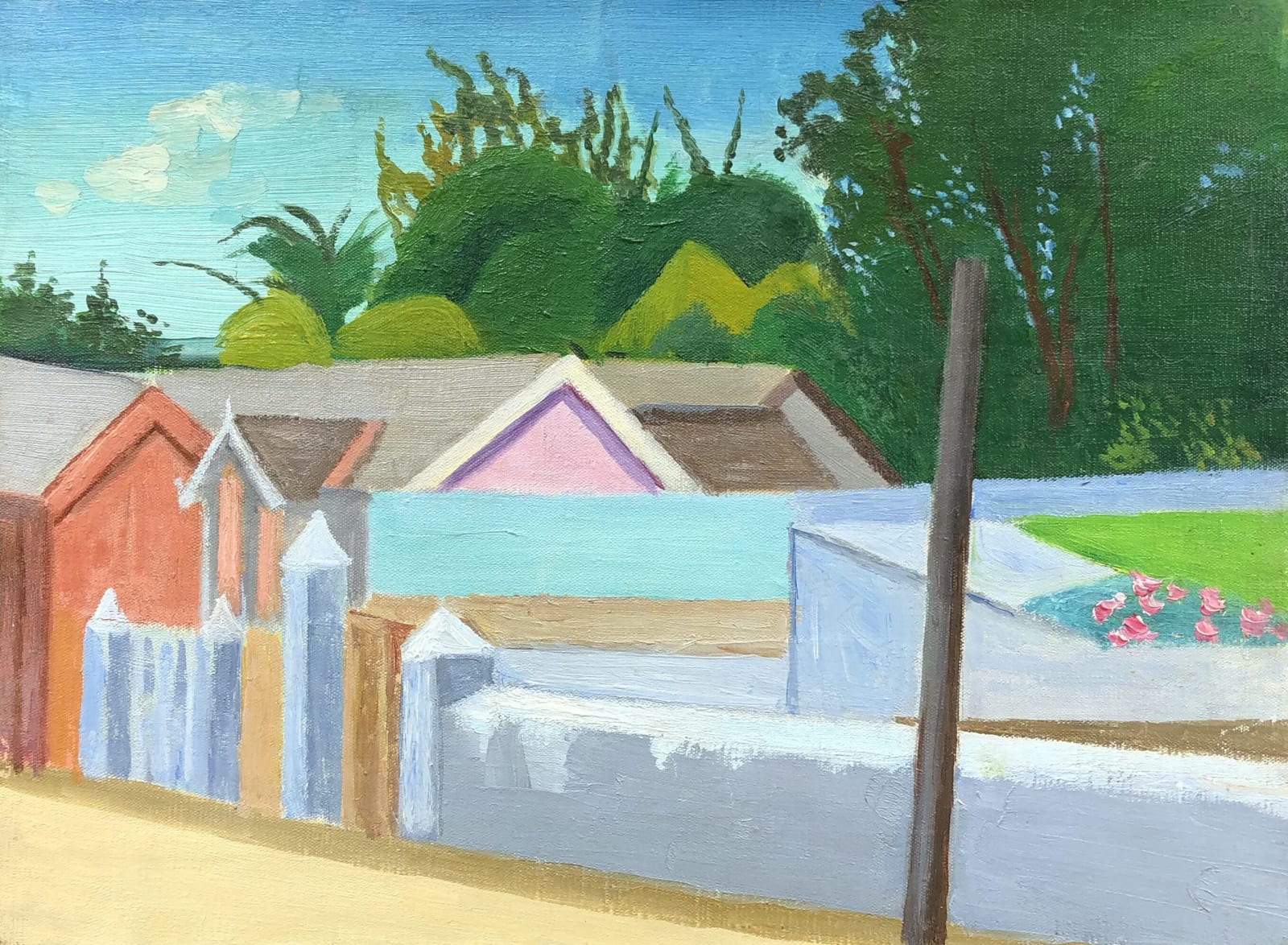Joseph Stella 1877-1946
A Corner of Barbados, 1937
Oil on canvas
11 x 15 inches
27.9 x 38.1 cm
Framed dimensions 14 1/2 x 18 inches
27.9 x 38.1 cm
Framed dimensions 14 1/2 x 18 inches
Inscribed on verso: A corner of / Barbados / O:P by / Joseph Stella
Joseph Stella’s artistic career defies easy categorization. He was simultaneously a modernist and traditionalist, a dual citizen of the Old and New World, a bold experimenter and masterful practitioner of time-honored...
Joseph Stella’s artistic career defies easy categorization. He was simultaneously a modernist and traditionalist, a dual citizen of the Old and New World, a bold experimenter and masterful practitioner of time-honored artistic techniques. His iconic paintings of New York City, such as the Brooklyn Bridge and Coney Island, celebrate modernity and the Machine Age, while his exuberant paintings of the natural world speak to the spiritual revelation that guided and grounded him throughout his life. Until recently, the divergent aspects of Stella’s career “confounded his legacy.” But in Joseph Stella: Visionary Nature, the multi-venue museum exhibition that focuses on the artist’s lifelong engagement with nature, a more complete and nuanced understanding of his career has emerged.
Stella’s work of flora and fauna demonstrate his deep connection to and close observational study of nature to invigorate his creativity and sustain his human spirit. Indeed, nature was a salve to his woes about life and the modern age. He made countless drawings and paintings of flowers, many of which were done at the New York Botanical Garden – a favorite place for the artist. In these works, Stella explored new styles and pressed the limits of his imagination. Like nature itself, he was always changing, always growing.
Stella found himself in Barbados in 1937, when then health of his wife had declined and she asked him to bring her home. He loved the island paradise, as it reawakened his creativity and love the natural world, much as his returns to Italy did. Although he remained in Barbados for only five months, the landscape he absorbed and the motifs he developed fueled his art for the next three years. The Barbados paintings radiated "innocence" and "sensuality." Barbara Haskell in her monograph on Stella called the work "rhapsodic celebrations of sunshine and joy."
Stella’s work of flora and fauna demonstrate his deep connection to and close observational study of nature to invigorate his creativity and sustain his human spirit. Indeed, nature was a salve to his woes about life and the modern age. He made countless drawings and paintings of flowers, many of which were done at the New York Botanical Garden – a favorite place for the artist. In these works, Stella explored new styles and pressed the limits of his imagination. Like nature itself, he was always changing, always growing.
Stella found himself in Barbados in 1937, when then health of his wife had declined and she asked him to bring her home. He loved the island paradise, as it reawakened his creativity and love the natural world, much as his returns to Italy did. Although he remained in Barbados for only five months, the landscape he absorbed and the motifs he developed fueled his art for the next three years. The Barbados paintings radiated "innocence" and "sensuality." Barbara Haskell in her monograph on Stella called the work "rhapsodic celebrations of sunshine and joy."
Provenance
The artist;By bequest to his nephew, Sergio Stella, 1946;
By descent in the family, until the present
Please join our mailing list
* denotes required fields
We will process the personal data you have supplied in accordance with our privacy policy (available on request). You can unsubscribe or change your preferences at any time by clicking the link in our emails.
